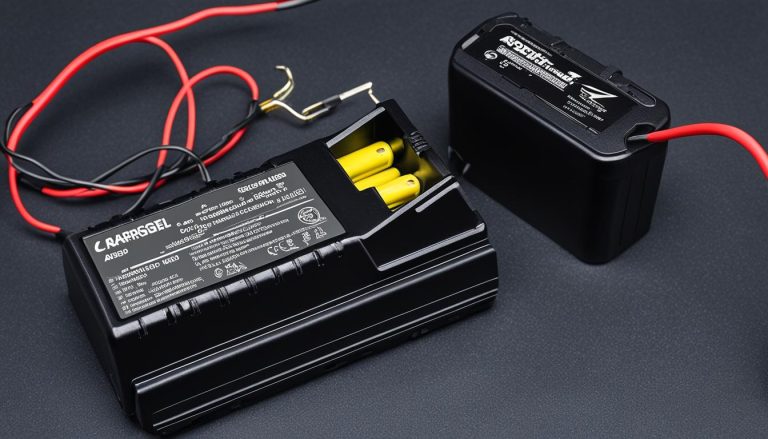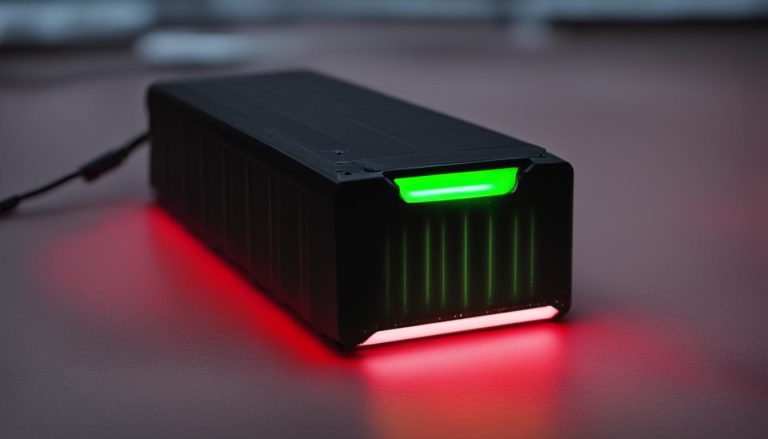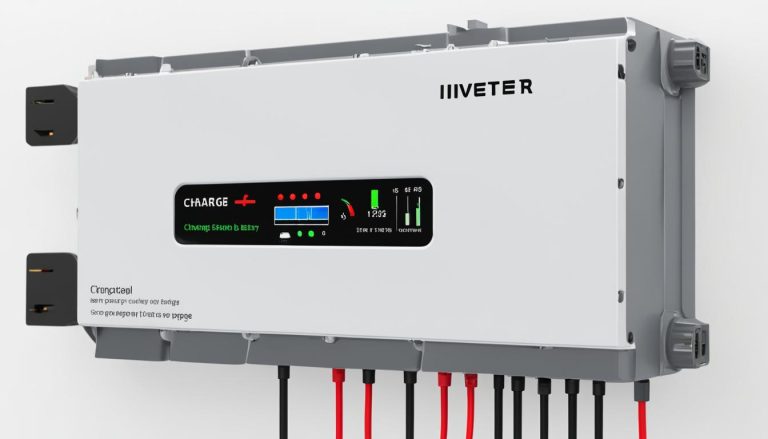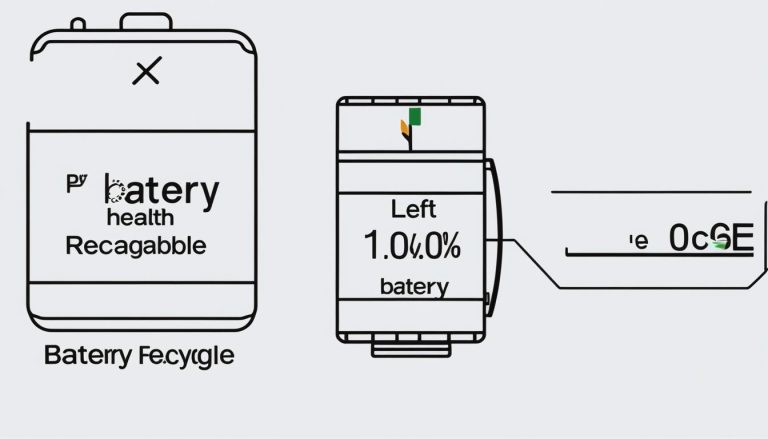Charge Time for Deep Cycle Battery Explained
batterychargers.site and its partners may earn a commission if you purchase a product through one of our links
Deep-cycle batteries are designed to be repeatedly discharged and recharged, and they are commonly used in applications such as golf carts, RVs, and solar power systems. The time it takes to charge a deep cycle battery depends on several factors, including the type of battery, the size and capacity of the battery, the charging method used, and the level of charge the battery originally had. Charging a deep cycle battery can take anywhere from an hour to 24 hours, depending on these factors. It is important to choose a suitable charger and ensure that the charging settings match the battery to avoid overcharging or undercharging, which can negatively impact the battery’s performance and lifespan.
Key Takeaways:
- The charge time for a deep cycle battery varies depending on factors such as battery type, size, capacity, charging method, and initial charge level.
- Charging a deep cycle battery can take anywhere from an hour to 24 hours.
- Using a suitable charger and matching the charging settings to the battery is crucial to avoid overcharging or undercharging.
- Overcharging or undercharging can significantly affect the battery’s performance and lifespan.
- Proper charging practices can maximize the lifespan and performance of a deep cycle battery.
Understanding Deep Cycle Batteries
Deep cycle batteries are an essential part of many applications, such as marine, RV, and renewable energy systems. They provide reliable and long-lasting power for extended periods. To choose the right battery for your needs, it’s important to understand the different types available.
Flooded Deep-Cycle Batteries
Flooded deep-cycle batteries, also known as wet cell batteries, are the most common type. They have removable caps that allow you to check and refill the electrolyte. While they require regular maintenance, including checking fluid levels and adding distilled water as needed, they are generally more affordable.
Sealed Deep-Cycle Batteries
Sealed deep-cycle batteries, also referred to as valve-regulated lead-acid (VRLA) batteries, are maintenance-free and do not require fluid inspection or refilling. They are sealed, preventing electrolyte leakage and making them safer to use. However, sealed deep-cycle batteries tend to be more expensive than flooded batteries.
Absorbed Glass Mat (AGM) Batteries
AGM batteries use a special glass mat separator that absorbs and immobilizes the electrolyte between the battery plates. This design offers several advantages, including improved durability, resistance to vibration, and a longer lifespan. AGM batteries are a popular choice for recreational vehicles and marine applications.
Gel Batteries
Gel batteries contain a gelled electrolyte that is thicker than the liquid electrolyte found in other types of batteries. This gel-like consistency prevents leakage and makes gel batteries more resistant to extreme temperatures. They are commonly used in deep-cycle applications where maintenance-free operation is desired.
Lithium-Ion Batteries
Lithium-ion batteries are the latest advancement in deep cycle battery technology. They offer several benefits, including high energy density, lightweight design, and a longer lifespan compared to traditional battery types. Lithium-ion batteries can also be discharged more deeply without causing damage. However, they are generally more expensive than other types of deep-cycle batteries.
Choosing the right type of deep cycle battery depends on your specific requirements and budget. Consider factors such as maintenance needs, lifespan, and the specific application in which the battery will be used.
| Deep Cycle Battery Type | Maintenance Requirement | Advantages |
|---|---|---|
| Flooded Deep-Cycle Batteries | Regular maintenance required | Affordable |
| Sealed Deep-Cycle Batteries | Maintenance-free | Leakage-proof |
| Absorbed Glass Mat (AGM) Batteries | Maintenance-free | Improved durability |
| Gel Batteries | Maintenance-free | Temperature-resistant |
| Lithium-Ion Batteries | Maintenance-free | Lightweight, longer lifespan |
The image above illustrates the different types of deep cycle batteries, providing a visual representation of their features and characteristics. This can help you make an informed decision when selecting the right battery for your specific needs.
How to Charge a Deep Cycle Battery
When it comes to charging a deep cycle battery, there are several methods you can choose from to ensure optimal performance and longevity. Let’s explore the different charging options:
Solar Power Charging

If you’re looking for an environmentally friendly and off-grid charging solution, solar power charging is an excellent choice. This method harnesses energy from the sun through solar panels, which convert sunlight into electricity. To charge your deep cycle battery using solar power, you’ll need a solar power system comprising solar panels, charge controllers, and inverters. The solar panels capture the sunlight and convert it into an electrical current, which is then regulated by the charge controllers. Finally, the inverters convert the DC power produced by the solar panels into AC power, which can be used to charge your deep cycle battery.
Grid Power Charging
Grid power charging is a convenient option if you have access to AC power from the grid. To charge your deep cycle battery using grid power, you’ll need a suitable AC to DC battery charger. This charger converts the AC power from the grid into DC power, which is then used to charge your battery. Grid power charging is a reliable and efficient method, especially if you have a power source readily available.
Alternator and Starter Battery Charging
If you have a built-in DC to DC On-Board Battery Charger in your vehicle, you can use the alternator and starter battery to charge your deep cycle battery. This method is particularly handy if you’re on the go and don’t have access to solar power or grid power. The DC to DC On-Board Battery Charger efficiently transfers power from the vehicle’s alternator to the deep cycle battery, ensuring a steady and reliable charge. This charging method is commonly used in RVs, boats, and other vehicles equipped with a deep cycle battery.
Now that you’re acquainted with the various charging methods for deep cycle batteries, it’s important to choose the best way to charge your battery based on your specific requirements and available resources. Remember to always use a suitable charger for deep cycle batteries and follow the recommended charging stages to optimize performance and prolong the lifespan of your battery.
Battery Maintenance and Safety Precautions
Proper maintenance is essential to maximize the lifespan of your deep cycle battery. By following a few simple steps, you can ensure that your battery stays in optimal condition for years to come.
First and foremost, regularly inspect the fluid level of your battery. Top it up with distilled water if necessary, being careful not to overfill. This will help prevent the battery from drying out and ensure it can function properly.
Additionally, it’s important to regularly check the voltage of your battery. This can be done using a voltmeter or multimeter. A healthy deep cycle battery should read around 12.6 to 12.8 volts when fully charged. If the voltage is significantly lower, it may indicate a problem with the battery or the charging system.
To assess the overall health of your battery, perform a load test. This test measures the battery’s capacity to provide sufficient power when under load. It can help identify any weaknesses or issues with the battery’s performance.
In order to ensure your safety when handling batteries, always wear proper personal protective equipment, such as gloves and goggles. Check the battery for any signs of damage or leakage, and keep the terminals clean and free of corrosion. These precautions will minimize the risk of accidents and maintain the efficiency of your battery.
By following these simple maintenance and safety precautions, you can extend the lifespan of your deep cycle battery and ensure it continues to perform at its best. Remember, a well-maintained battery is a reliable battery.
FAQ
How long does it take to charge a deep cycle battery?
The charging time for a deep cycle battery can vary depending on factors such as battery type, size, capacity, and charging method. It can take anywhere from an hour to 24 hours to fully charge a deep cycle battery.
What are the different types of deep cycle batteries?
There are various types of deep cycle batteries, including flooded deep-cycle batteries, sealed deep-cycle batteries, AGM batteries, gel batteries, and lithium-ion batteries.
How do I charge a deep cycle battery?
Deep cycle batteries can be charged using different methods, such as solar power charging, grid power charging, and alternator and starter battery charging, depending on the available resources and setup.
What is the best way to charge a deep cycle battery?
The best way to charge a deep cycle battery depends on the specific application and the resources available. Solar power charging is environmentally friendly, grid power charging provides a reliable source, and alternator and starter battery charging can be used in vehicles. Choose the method that suits your needs best.
What maintenance should I perform on a deep cycle battery?
Regular maintenance of a deep cycle battery is crucial for optimal performance. This includes checking fluid levels, inspecting voltage, load testing, and following safety precautions to ensure a longer lifespan.
How should I ensure battery safety?
Battery safety precautions include wearing personal protective equipment, checking for damage or leakage, keeping terminals clean, and following proper handling and storage practices.






